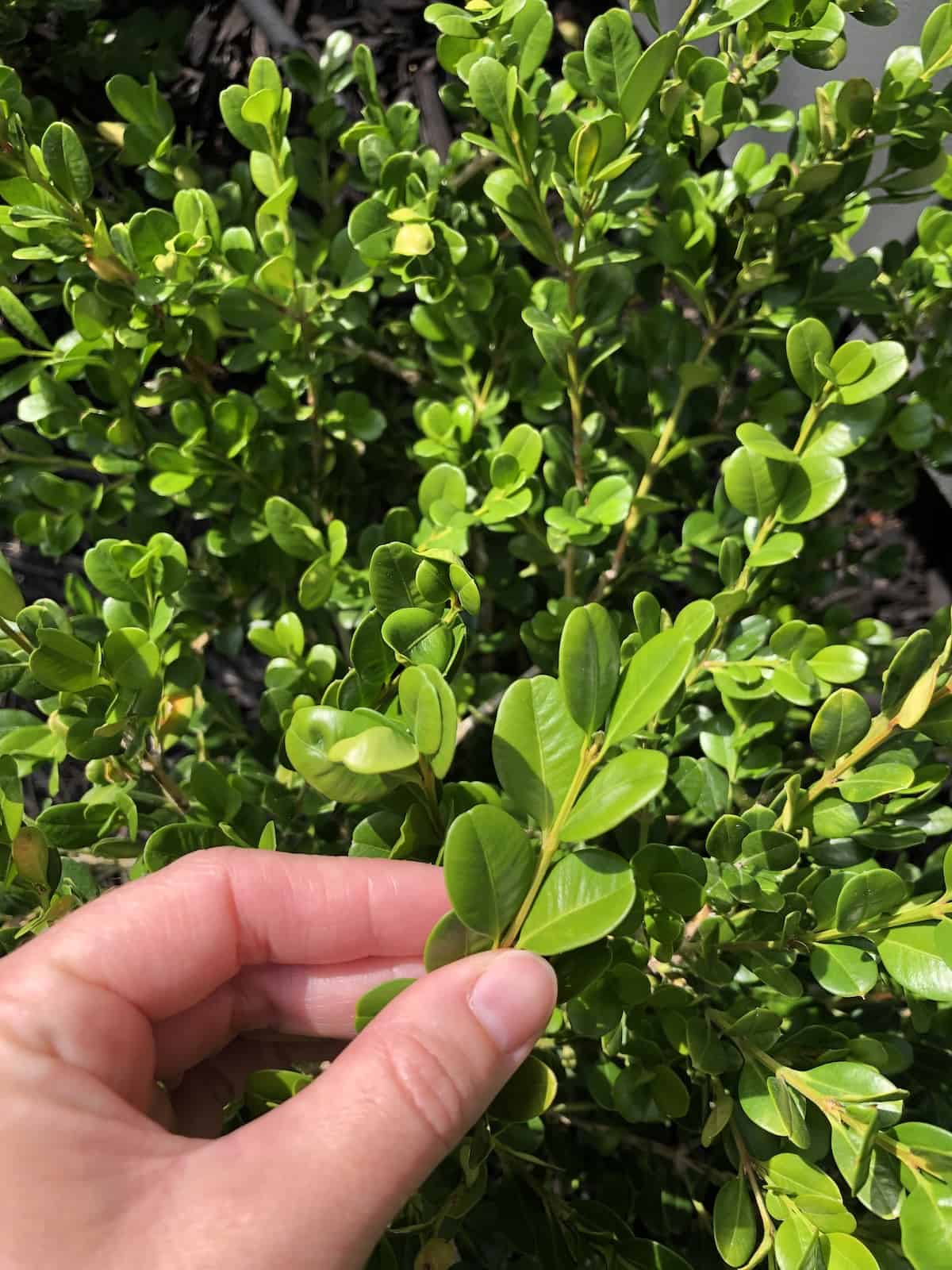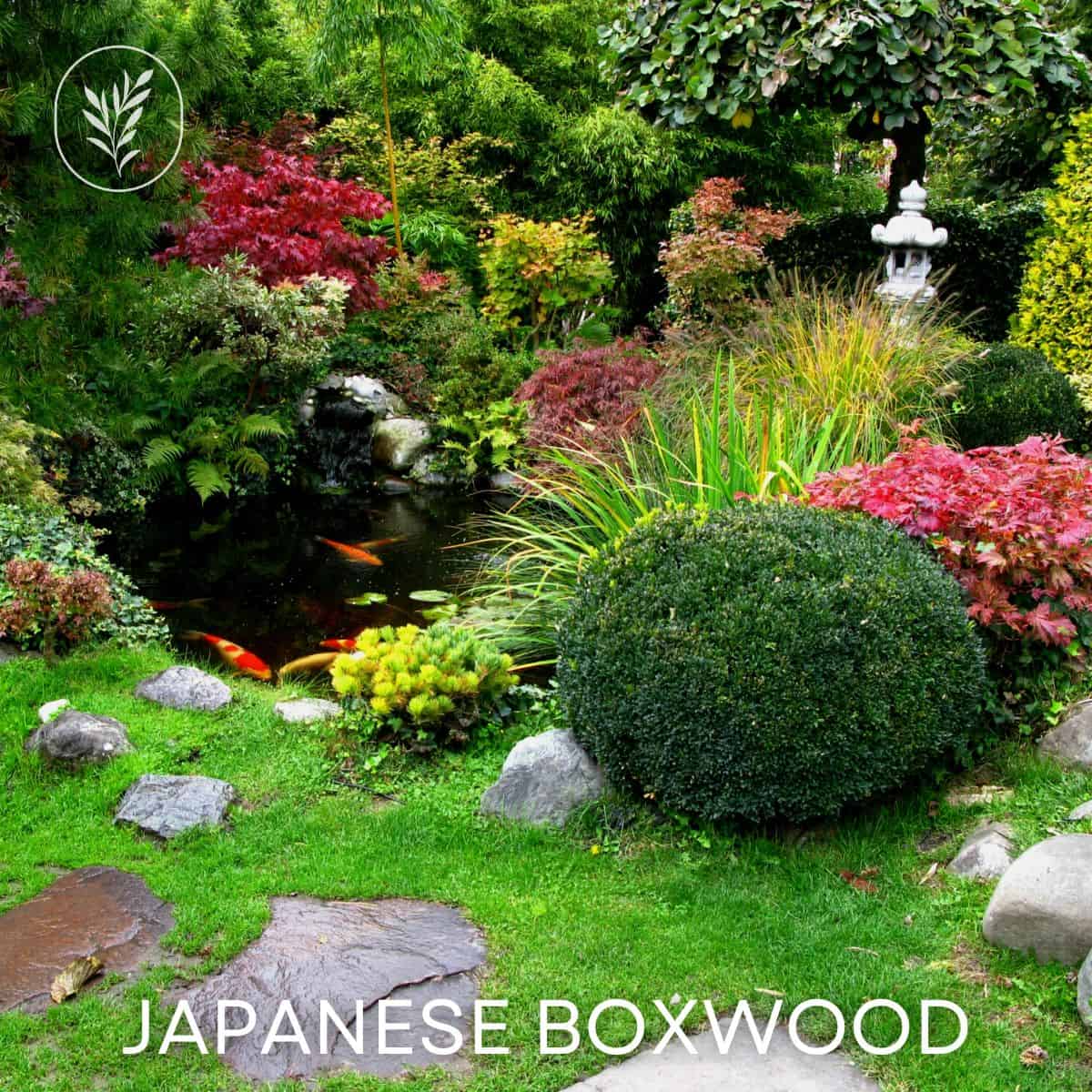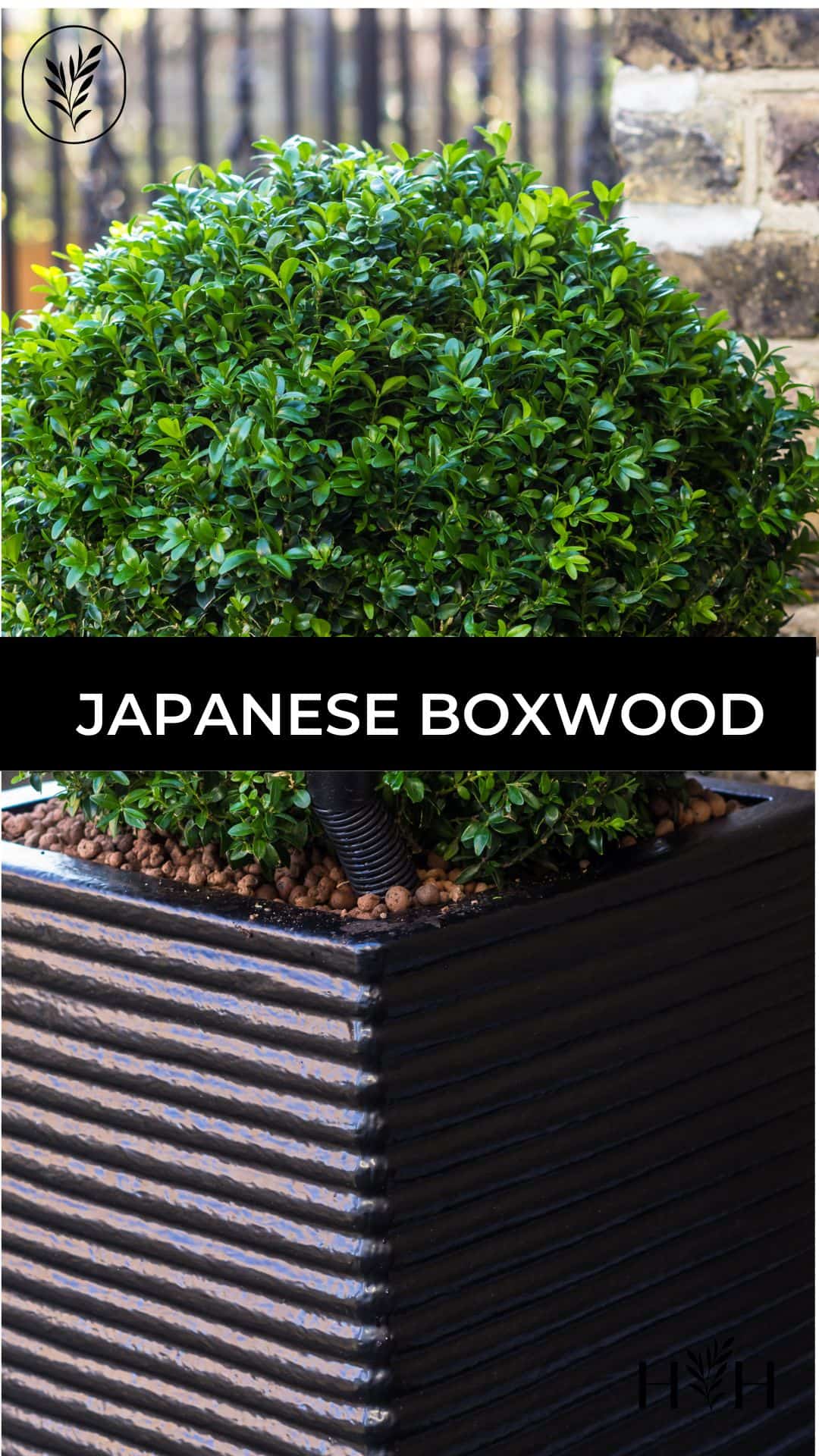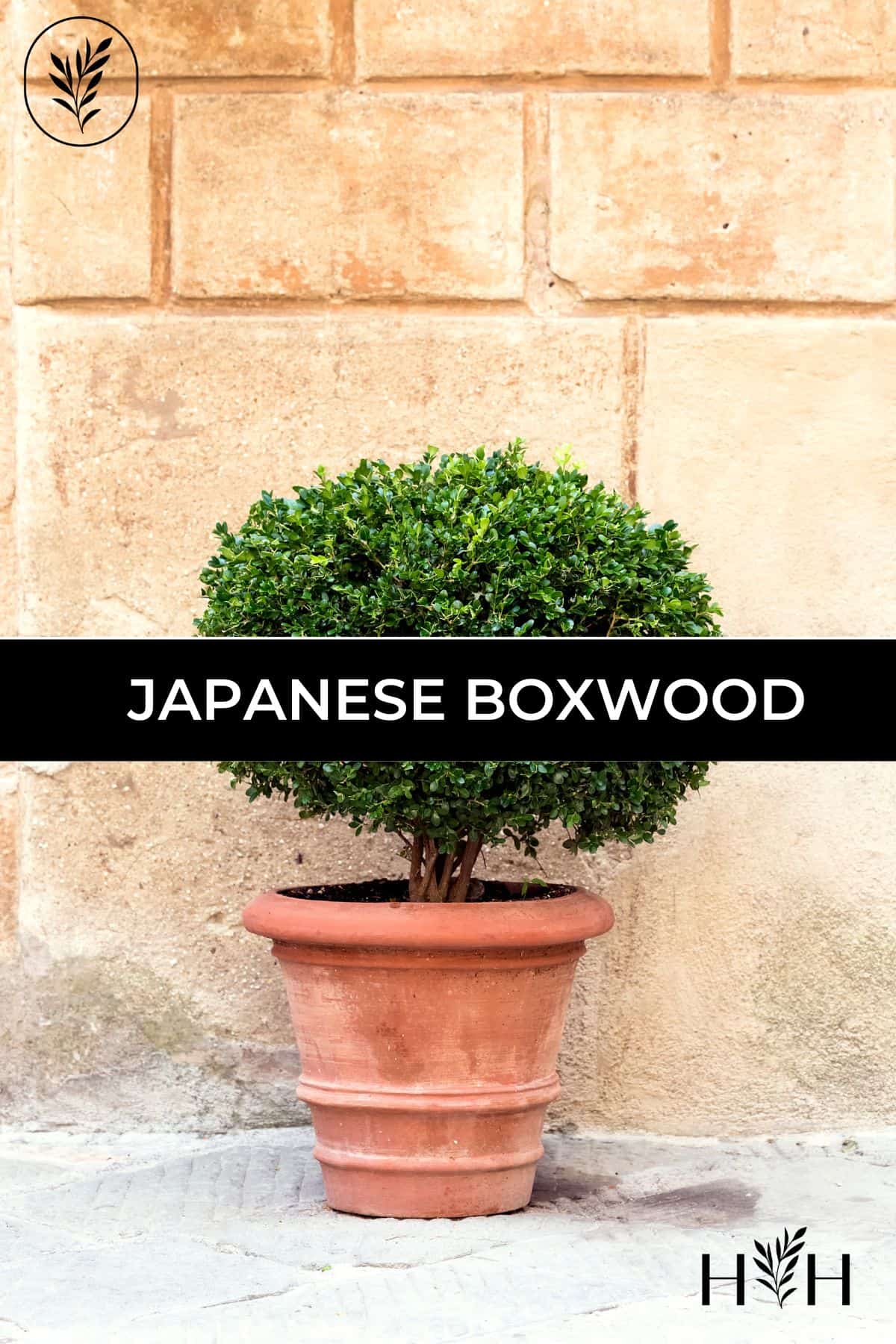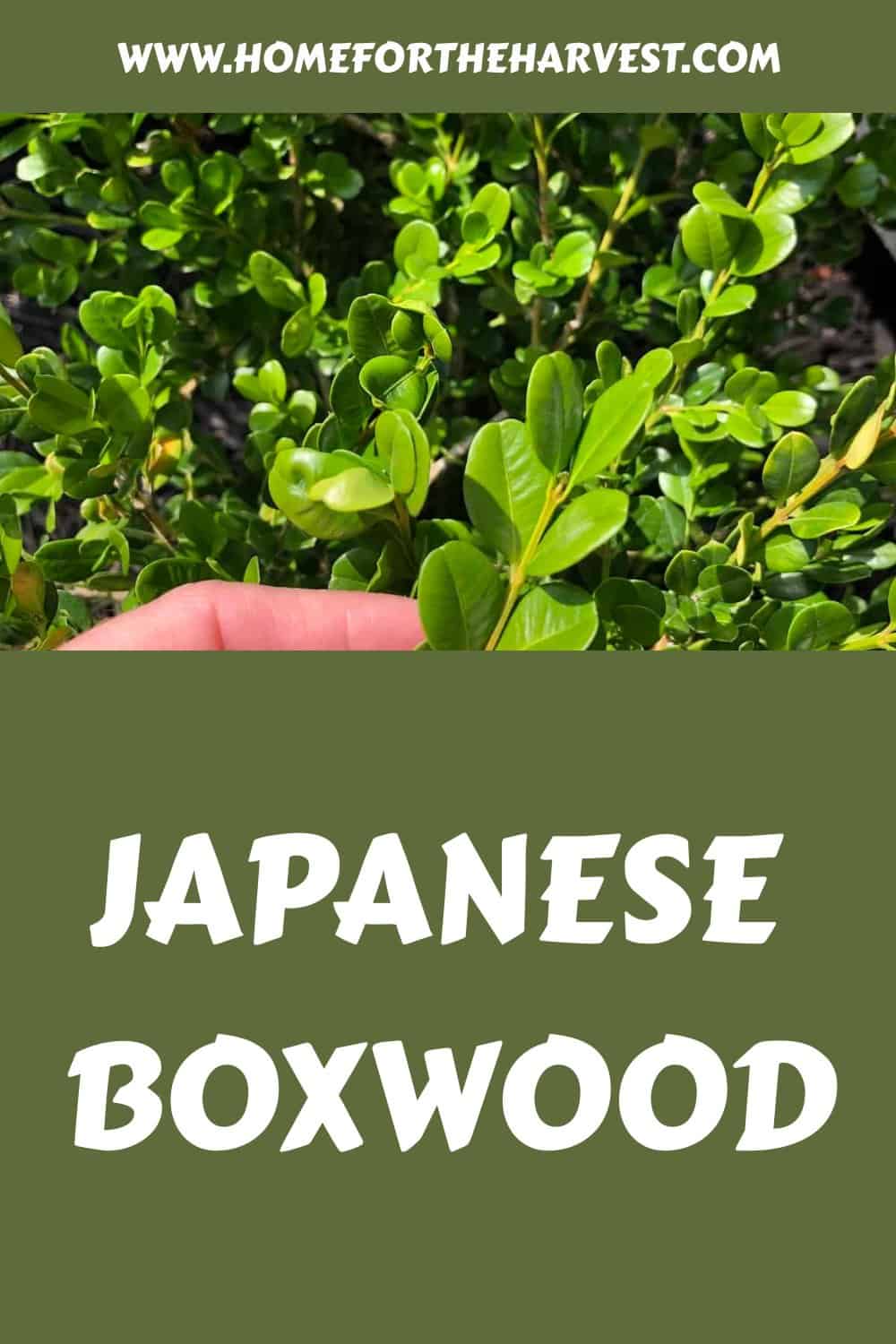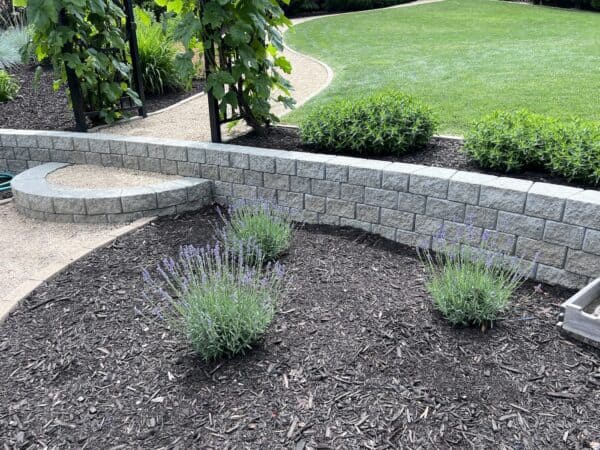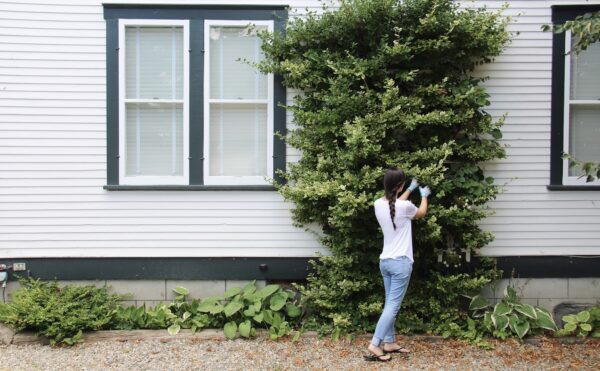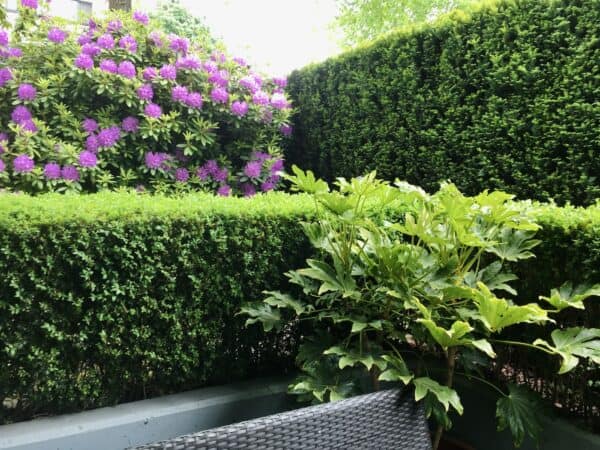Japanese boxwood (Buxus microphylla) is a broadleaf evergreen shrub with small glossy green leaves. Also called littleleaf boxwood, this species is among the coldest, most hardy, disease-resistant, and easiest to grow of all ornamental boxwood. Japanese boxwood plants can grow to be large shrubs over decades, but they are usually pruned into small hedges or topiaries.
Japanese boxwood basics
Japanese boxwood is also known as Littleleaf boxwood. Its botanical Latin species name is Buxus microphylla. These slow-growing broadleaf shrubs are grown for their shiny green foliage and have the wonderful feature of keeping their leaves over the wintertime.
Japanese Boxwood is generally cold-hardy in Zones 5-9, with some cultivars being more cold-tolerant than others. While many types turn a bit yellow-bronze in the wintertime, most foliage returns to its green color in the spring. Certain cultivars have been bred for better year-round green color.
Most Japanese Boxwood shrubs grow to about 3 feet (1 meter) tall and 3 feet (1 meter) wide, although shorter and taller cultivars are available. Littleleaf boxwood plants have dense branches and tend to create a naturally rounded shape as they grow
These ornamental evergreens grow tiny flowers in the springtime, giving them a lovely fragrance at the beginning of the growing season and value to pollinators. Japanese Boxwood has shallow roots, and these plants benefit from mulching the soil around them as temperatures rise. Plants are generally deer-resistant and easy to grow.
This plant has been cultivated in Japan since at least the 14th century. Japanese boxwood is a popular shrub to plant as a low hedge or edging plant. This is because it tends not to have as many disease problems as the English boxwood or American boxwood (Buxus sempervirens, common boxwood).
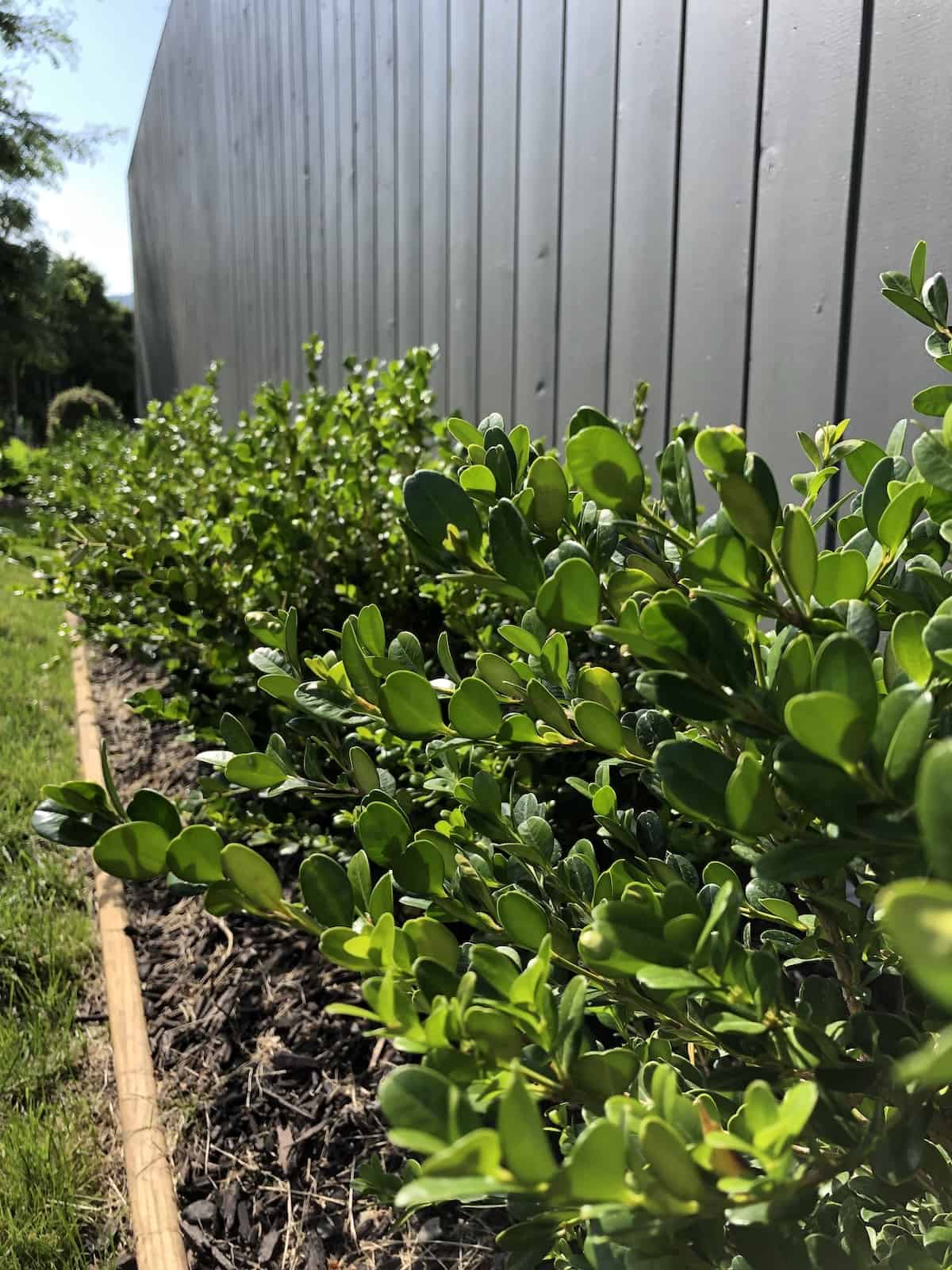
Cultivars of Japanese boxwood
There are a number of different named Japanese boxwood varieties or cultivars. Here are some of the most popular cultivars of Japanese Boxwood:
- ‘Baby Gem Boxwood’ – New compact variety, heat and drought-resistant
- ‘Compacta’ – Small Japanese Boxwood, great for a low hedge
- ‘Curly Locks’ – Small type with twisted branches & leaves
- ‘Faulkner’ – Dense variety with RHS Award of Garden Merit recognition
- ‘Grace Hendrick Phillips’ – Low-growing cultivar, edging choice
- ‘Green Beauty’ – Drought-tolerant variety with good summer color
- ‘Green Borders’ (‘Grebor’) – Fine-leaved with leaves grow down to the ground
- ‘Green Pillow‘ – Dense, rounded variety
- ‘Jim Stauffer’ – Cold-hardy, fast-growing, but ultimately small
- ‘Little Missy’ – A very small variety with dense branches
- ‘National’ – Very tall Japanese Boxwood
- ‘Rubra’ – Variety with orange-hued leaves
- ‘Sprinter’ (‘Bulthouse’) – Fast-growing form of ‘Winter Gem’
- ‘Sunnyside’ – Larger leaves, very cold-hardy
- ‘Wedding Ring’ – Specialty type with variegated leaves
- ‘Winter Beauty’ – Round form, dark green leaves
- ‘Winter Gem’ – Round form, dark green leaves, very cold-hardy
- ‘Wintergreen’ – Bright green leaves that stay green in winter
Of these varieties, the most widely used are likely Baby Gem, Winter Gem, Sprinter, and Faulkner. Read more about the beautiful Winter Gem Boxwood (Buxus microphylla var. japonica ‘Winter Gem’).
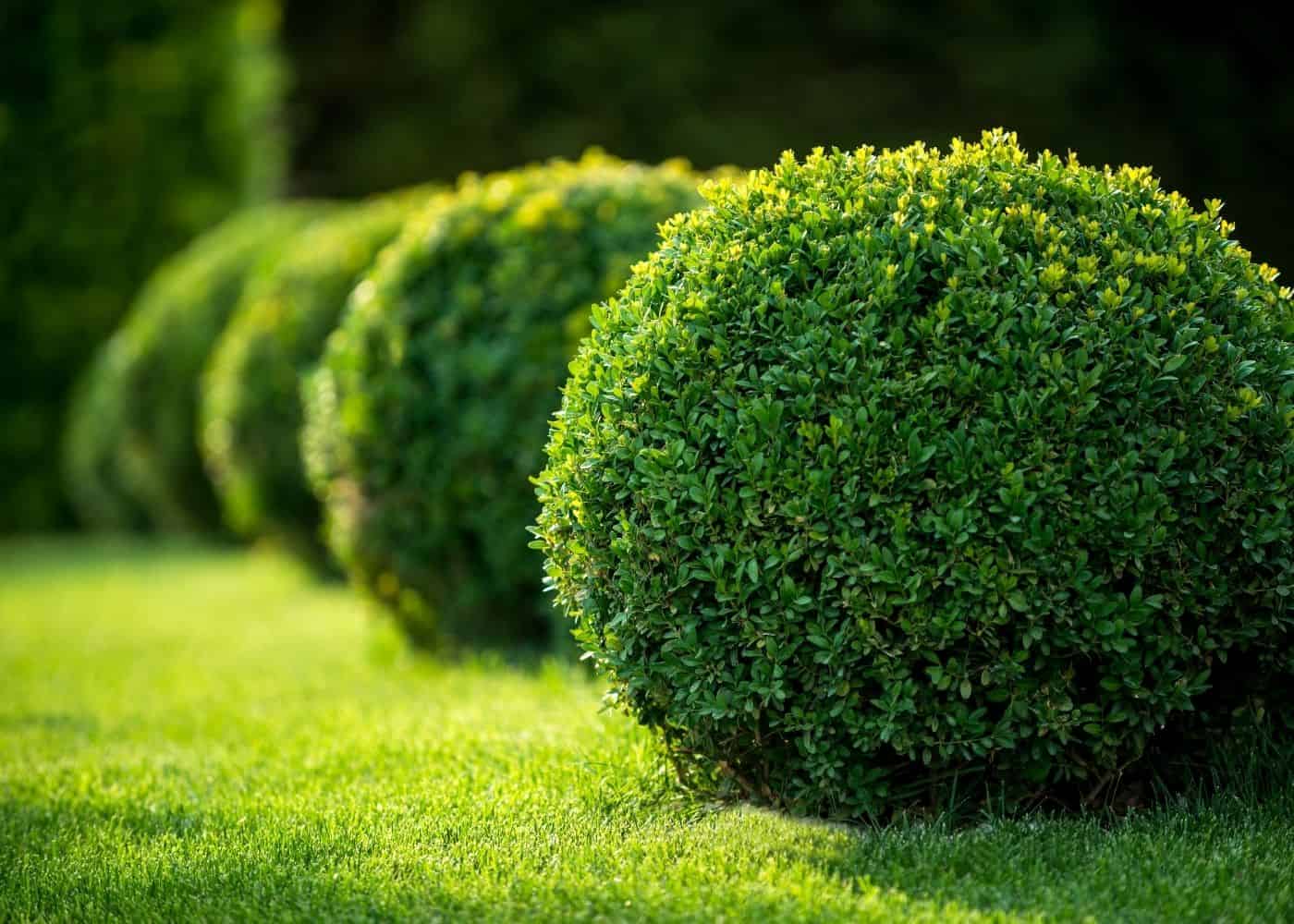
Landscaping uses for Japanese boxwood
Japanese Boxwoods are typically grown as ornamental plants. One of its most suitable uses is for low-growing beautiful hedges or formal topiary. Japanese boxwoods also make great foundation plants and can be used to frame a focal point. Certain cultivars can be used for bonsai and formed into tiny trees. Lastly, these stately shrubs make an excellent hedge plant to complement linear hardscaping, such as along a fence, driveway, garden path, or entryway.
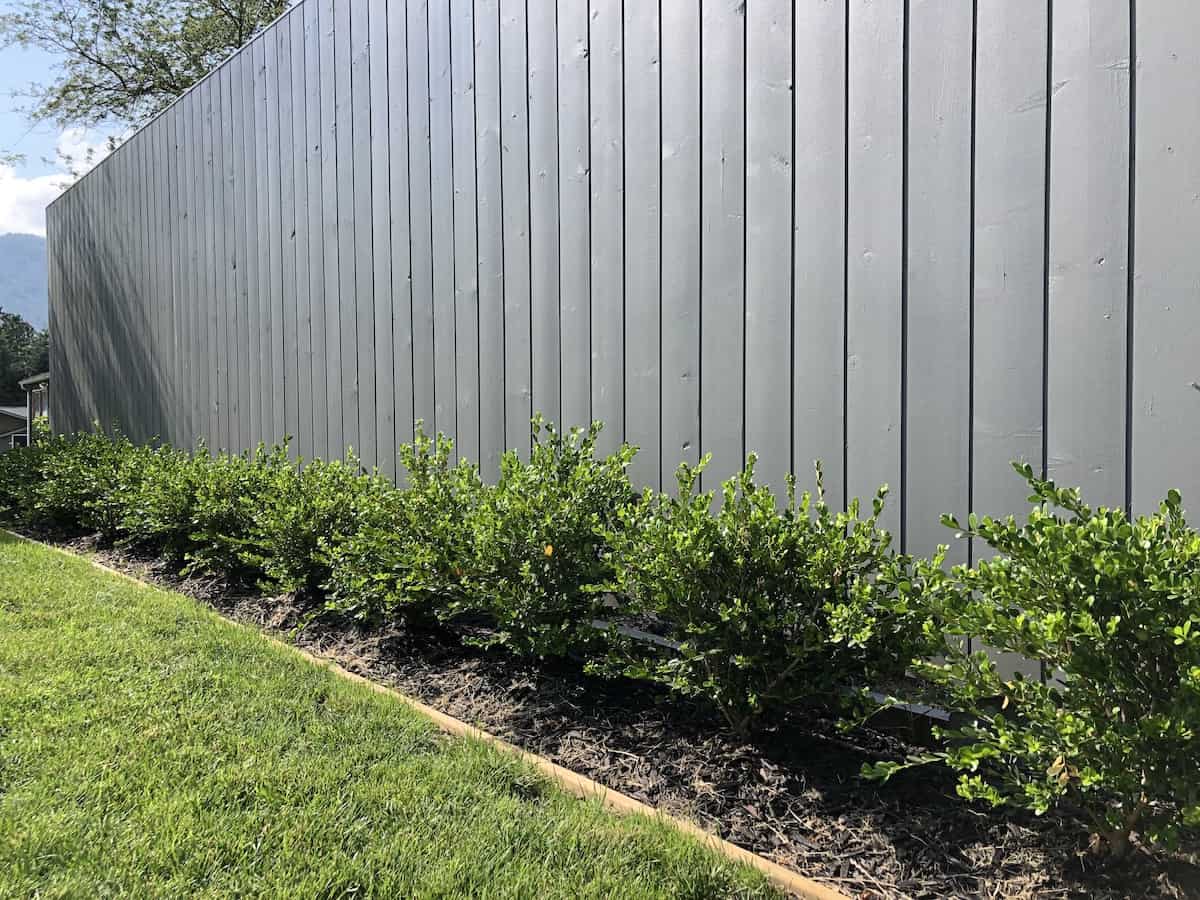
Choosing a planting location for Japanese boxwood shrubs
Even though the Japanese boxwood is fairly tough, it’s important to choose an appropriate place to plant and grow these shrubs. They need some sunlight to thrive, but too much heat can cause foliar damage and dried-out roots. The leaves are also prone to drying out with cold winter winds.
Here are the ideal planting location characteristics for Japanese Boxwood shrubs:
- Choose a cultivar that’s well-matched to the local climate. Japanese Boxwood are easiest to grow in plant hardiness Zones 6-8, but there are different cultivars available covering Zones 4-11.
- Prioritize sunny planting locations, except in the hottest zones. While boxwoods become established more quickly in the shade, established plants grow more vigorously with adequate sunlight. Morning sun is preferable to full afternoon sun, but not strictly necessary.
- Sheltered locations can help minimize exposure to cold winter conditions, including dry winter winds and early spring freeze-thaw cycles.
- Japanese Boxwood plants are tolerant to varying soil types but prefer well-draining, loamy soil. They will grow in alkaline soils but prefer acidic to neutral soil (a soil pH between 6.5 and 7.0 is ideal).
The ideal circumstance for a Japanese boxwood (Buxus microphylla) is dappled sunlight or a part sun location. In general, the morning sun is preferred to the harsh afternoon sunshine. This is particularly true in places where the afternoon sun is quite hot. It is possible to grow Japanese Boxwood in full shade, but it will grow much more slowly because of the lack of light. Japanese Boxwood shrubs make excellent low hedges and foundation plantings.
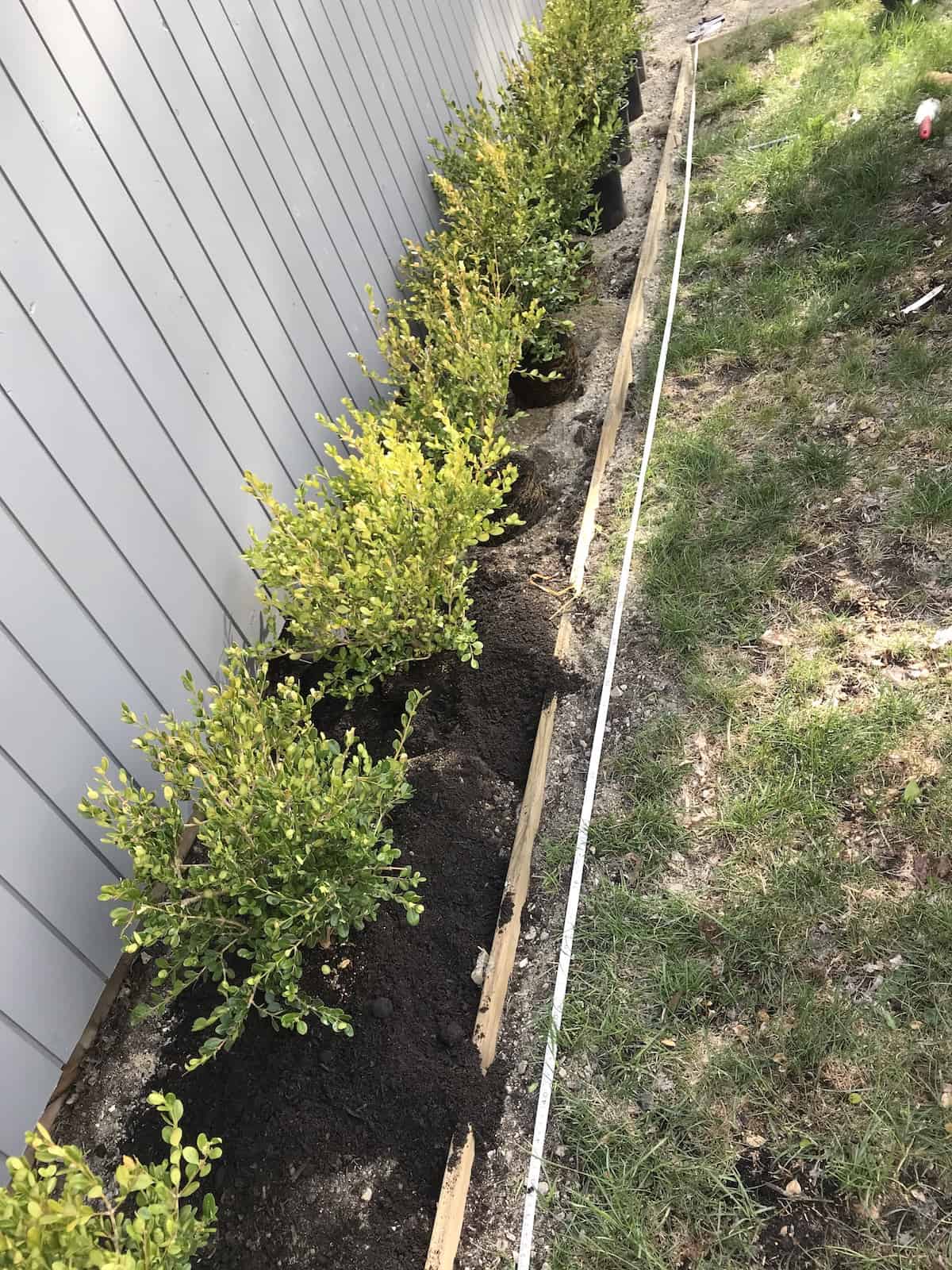
Spacing Japanese boxwood plants
The spacing of Japanese Boxwood plants depends on the desired final size of the shrub(s). Shrubs planted as a single specimen can grow 3 feet wide (1 m) and over 3 feet (1 m) tall over the course of several decades. These slow-growing shrubs are small at first but do expand into dense, larger rounded balls over time.
Japanese boxwood plants are often planted spaced out in a line to form a hedge. Before deciding on spacing, the final dimensions of the hedge should be defined in the garden space.
For a medium-tall & wide hedge (about 3′ or 1 m tall), Japanese Boxwood plants can be planted 2′-4′ apart. At 3′ apart, the small plants will have spaces between them for years but have room to grow and thrive as full-size plants later on. Measure spacing distances from the center of one tree’s central trunk/stem to the center of its neighbor’s stem/trunk.
For a low-growing hedge, perhaps 1′ to 2′ tall, Japanese Boxwood plants should be spaced closer together. Japanese Boxwood spacing in low hedges is generally 12″ to 24″. Don’t expect a boxwood shrub to grow much wider than it is tall, as these are naturally spherical plants.
The RHS advises planting Japanese Boxwoods as close as 4″-6″ apart (10-15cm), as these are rather compact in comparison to some other boxwoods used in landscaping (see RHS guide). This close spacing is only reasonable if very small potted plants are purchased from the nursery. Expect these closely-spaced plants to form a low-growing hedge in 3-5 years after planting.
Planting Japanese boxwood
The best time to plant Japanese Boxwood is in early fall or early spring. Japanese Boxwood is best planted in a wide, shallow hole. For a hedge, dig a long trench for the root balls instead of individual holes. Carefully place each plant down into the hole and backfill gently with the soil that came out of the hole. You can mix in a transplanting fertilizer if you like.
Water the shrub(s) deeply after planting, and consider setting up drip irrigation. Mulch the plants with an organic mulch once their position is checked and confirmed as correct.
Mulching Boxwood shrubs
Mulching can do absolute wonders for your Japanese Boxwood. A thick 1″ layer of mulch can help suppress competitive weeds and protect the shallow boxwood roots. Because its roots are shallow, they can be susceptible to temperature fluctuations. Mulch keeps the soil cool in summer and also protects the roots from the harsh winter cold.
Extend the mulch over the soil at least several inches beyond the outer diameter of the plant. While the soil around the plant should be mulched, the mulch itself shouldn’t touch the actual stem of the shrub. Keep the ground clear where the stem goes down to the roots to provide adequate air circulation and avoid trapping dampness against the bark of the boxwood.
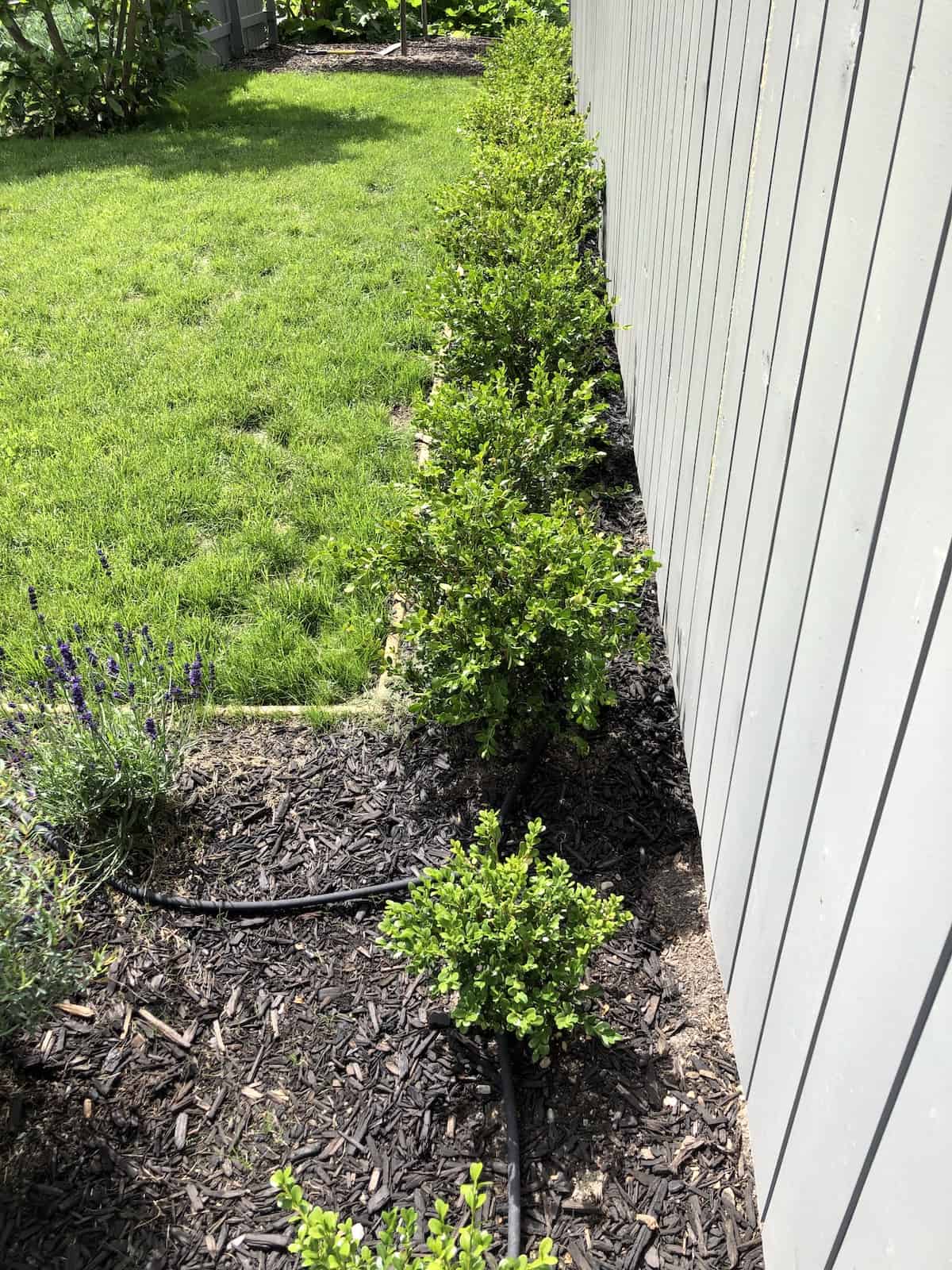
Watering Japanese boxwood
The shallow roots of the Japanese Boxwood require regular watering. This is particularly true during its first two years and during hot weather. It’s best to avoid watering your Japanese boxwood from above, as this practice can contribute to foliage disease.
Remember, though, that it’s important for the soil to be well-draining. If the soil doesn’t drain well enough, then the resulting waterlogged soil can cause root rot if weather conditions lead to the soggy ground for an extended period of time.
In order to make sure your moisture retention and soil drainage are sufficient, you can incorporate three inches of organic matter into the soil before planting, for example, well-rotted manure or compost. Mulching will also help slow the evaporation of water as well as weed competition.
Fertilizing Japanese boxwood/little leaf boxwood shrubs
It’s best to perform a soil test to learn how to help your Japanese Boxwood (Buxus microphylla) thrive. You can then base the levels of the macronutrients nitrogen, phosphorous, and potassium on the results of the analysis.
If you aren’t going to perform a soil test, you can use a high-quality organic fertilizer. You’ll want to sprinkle a slow-release fertilizer on top of the soil after planting the shrub. In the late spring or early summer, you’ll want to fertilize again before new growth appears on your shrub. It’s important to keep the fertilizer about six inches away from the stems of your boxwood when distributing fertilizer.
Japanese Boxwood shrubs most often require nitrogen more than any other nutrient. Nitrogen helps the plant grow its pretty green leaves, which in turn work to create energy for the plant. Nitrogen is often depleted in residential soils. Here are some natural ways to increase nitrogen in your shrub’s soil.
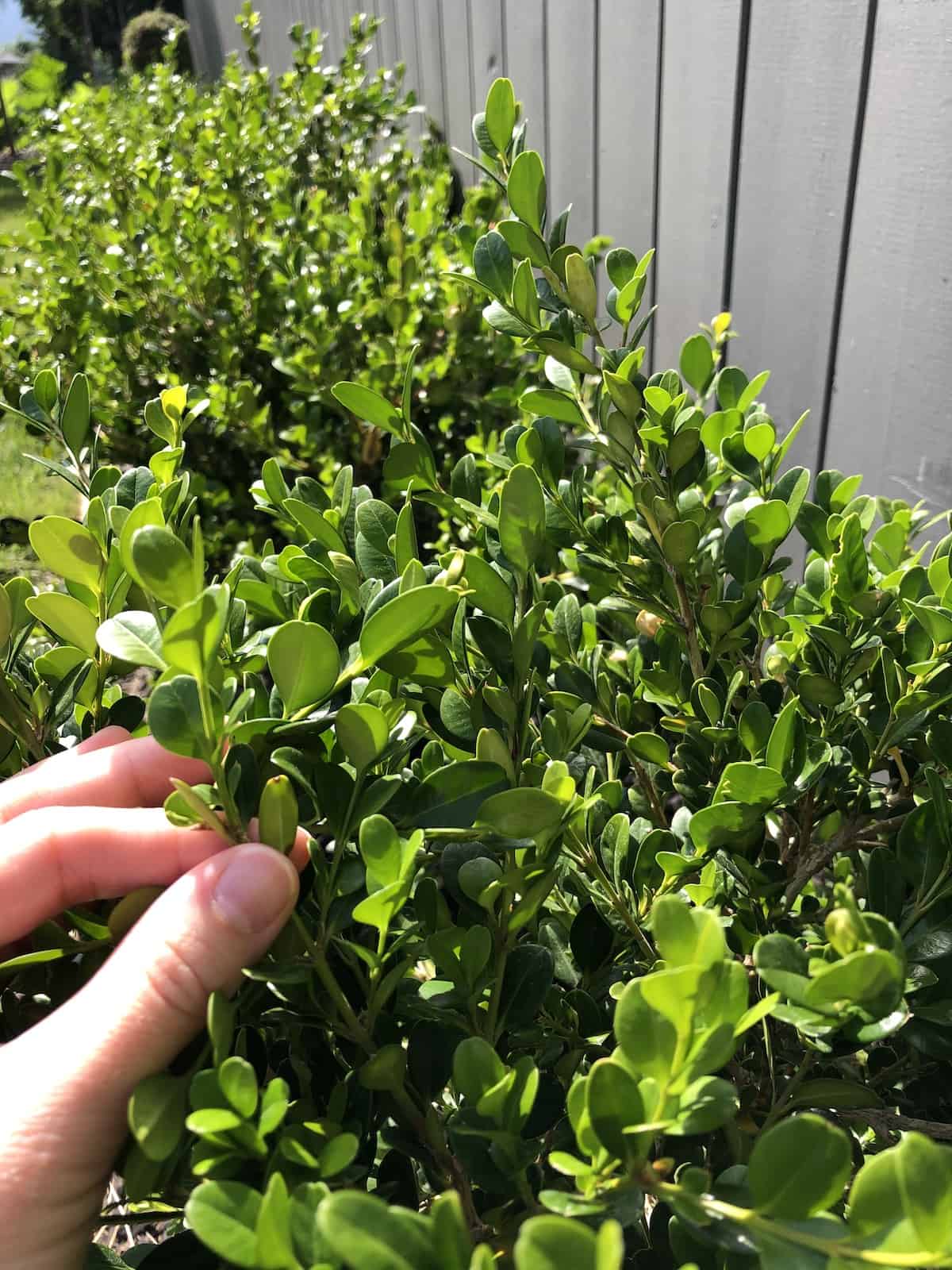
Pruning little leaf boxwood shrubs and hedges
The Japanese boxwood will look at its best if it undergoes annual shearing, and it responds very well to pruning. Make sure your pruning tools are sharp and clean prior to trimming a sheared hedge. For best results, use handheld pruners/secateurs or proper hedge shears and perhaps a shape form to guide in the shaping process. Some gardeners make guide forms for topiary-style boxwoods out of chicken wire or metal hardware cloth mesh.
Japanese Boxwood shrubs and hedges are best pruned in late spring. Let the plant come out of dormancy and put on an initial flush of light green growth, and then trim it back to encourage side shoots to grow. This will help create a densely-branched form. It’s best to avoid heavy shearing in the fall. Otherwise, the new growth that sprouts might not have enough time before the frost to harden off.
Don’t worry, though. If you want some fun projects during the fall so you keep your hands off shearing your boxwood, we’ve got you covered. Here are some great ideas for boosting your fall curb appeal.
Plant diseases that can affect Japanese boxwood
While the Japanese boxwood is a hardy plant, it can be damaged by various plant diseases and pests, including boxwood psyllid, boxwood leaf miner, boxwood mite, nematodes, and phytophthora root rot.
Boxwood blight
Boxwood blight is an awful fungal disease that can affect boxwood shrubs. It is caused by Calonectria pseudonaviculata. First reported in the mid-1990s in the UK, boxwood blight has since spread to Europe, New Zealand, and North America.
A plant suffering from boxwood blight can be infected in all of its aboveground parts. The first signs of blight are dark leaf spots. These end up forming brown blotches.
Infected leaves will show white spots on their undersides after experiencing high humidity. Narrow black streaks will also appear on the green stems, and fuzzy white masses will develop from these stem cankers during periods of high humidity.
Japanese boxwood shrubs with blight will experience rapid defoliation starting from the bottom branches and moving upward over time. This can kill young plants and cause older plants to lose the ornamental value they once had.
The best way to deal with boxwood blight is to prevent it from entering the landscape. You’ll want to buy your boxwood plants from nurseries that participate in a blight compliance agreement and are considered to be reputable.
You’ll always want to avoid shearing boxwoods when they’re wet. This can help reduce the probability of spreading diseases. Make sure all of your shearing tools are clean and disinfected.
If you have infected plants, make sure you remove any of the debris from pruning operations from the property. Don’t compost this material. If you have a property that contains historically important and large boxwoods, don’t introduce new boxwoods into the landscape.
Root rot
If planted in compacted and poorly draining soils, root rot can develop. Root rot is caused by a fungus, the typical culprits of which are Phytophthora, Rhizoctonia, Pythium, or Fusarium fungi. All of these fungi will thrive in overly wet soil and can become a problem for other plants if you transplant infected plants.
Plants that are plagued with root rot won’t be able to absorb nourishment or moisture from the soil. When suffering from this disease, plants can look similar to those that are inflicted with mineral deficiencies, stress, and drought.
If you notice that the leaves are discolored, wilting, or stunting, you might have a case of root rot. You’ll notice shoots and foliage dying back and soon after the whole plant can die. If you pull a plant suffering from root rot out of the ground, you will notice that the roots are soft, brown, and unpleasant smelling instead of white and firm.
If root rot is suspected, stop watering the area immediately. Look for any nearby leaks in irrigation or other sources of excess water. If possible, prune surrounding plants to let in more sunlight and increase air circulation. In extreme cases, the plant may have to be transplanted into fresh dry soil or replaced.
The best way to deal with a root rot problem is to avoid having one in the first place. The most important thing is to plant the shrubs in well-draining soil and not overwater your plants. Avoid planting boxwood in soggy soils. Boxwood can recover from root rot, but only if the issues with soggy, wet soil are fixed promptly.
Leaf spot
Leaf spot is a disease that interrupts photosynthesis and therefore weakens shrubs and trees. While this disease will most likely not harm your plant seriously, it should be taken seriously if there is moderate leaf loss in a 2-4 year period. If for several consecutive growing seasons, there is leaf loss, your Japanese boxwood can become more susceptible to diseases and pests and its growth can be reduced.
If your shrubs are infected with leaf spot disease, there are a number of things you can do to reduce the occurrence of the disease in the years to come. They include:
- Avoid overcrowding your plants, space them at least three feet apart;
- Prune your shrubs to improve air circulation and increase light penetration;
- Ensure mulch and organic debris is pulled back from the stem’s bark where it enters the ground;
- Rake up and destroy leaves that have fallen before the first snowfall;
- Water shrubs at the base and be sure to avoid splashing water on the leaves;
- Reduce shrub stress by proper watering techniques and mulching;
- Don’t fertilize unless a soil test recommends it.
Japanese boxwoods are tough shrubs, but all plants have diseases they can fall prey to. Knowing ahead of time what kinds of diseases boxwoods can face can ensure that you can prevent problems to the best of your ability and stop them early on in their process before they become too problematic.
Pests: Mites & leafminers
If you’re looking for a generally pest-resistant shrub, the Japanese boxwood is a good choice. However, there are two pests that you should still keep an eye out for when growing Japanese boxwood. These are boxwood mites and boxwood leafminers.
Boxwood mites feed on the undersides of the leaves. You’ll need a magnifying glass to see these tiny, sap-sucking bugs. Their presence results in brown marks or flecks right on the leaves.
Boxwood leafminers can result in raised areas, brown splotches, and blistering on leaves.
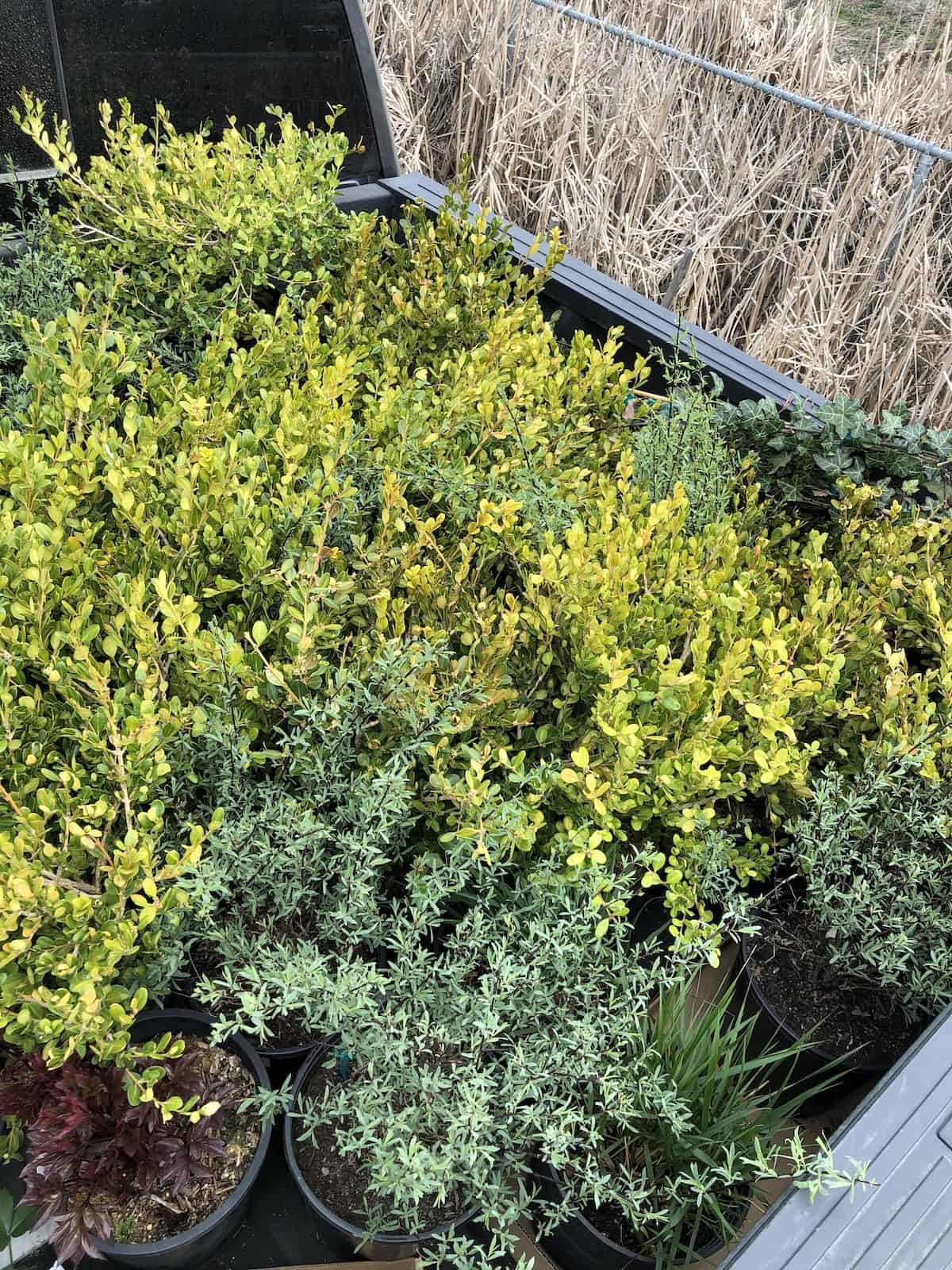
Common Japanese boxwood questions
Here are some frequently asked questions about Japanese Boxwood shrubs:
How big do Japanese boxwoods get?
Japanese Boxwood shrubs can grow 3 feet wide (1 m) and over 3 feet (1 m) tall, although it would take many years to grow to this size. Most gardeners prune their Japanese boxwood plants annually to keep them in the range of 18″ to 2 feet tall and wide.
How fast does Japanese boxwood grow?
Japanese boxwood shrubs grow very slowly. Most cultivars grow only 2″-3″ taller/wider each year. It can take several decades for a shrub to reach a mature size of about 3 feet wide and over 3 feet tall (if not pruned annually).
Is Japanese boxwood a good hedge?
Japanese boxwood is a good hedge plant, especially for a low-maintenance shrub with year-round curb appeal. Japanese boxwood plants tend to be more hardy and disease resistant than common boxwood. These plants should only be used for small-medium-height hedges, usually in the range of 18″ to 3 feet tall.


